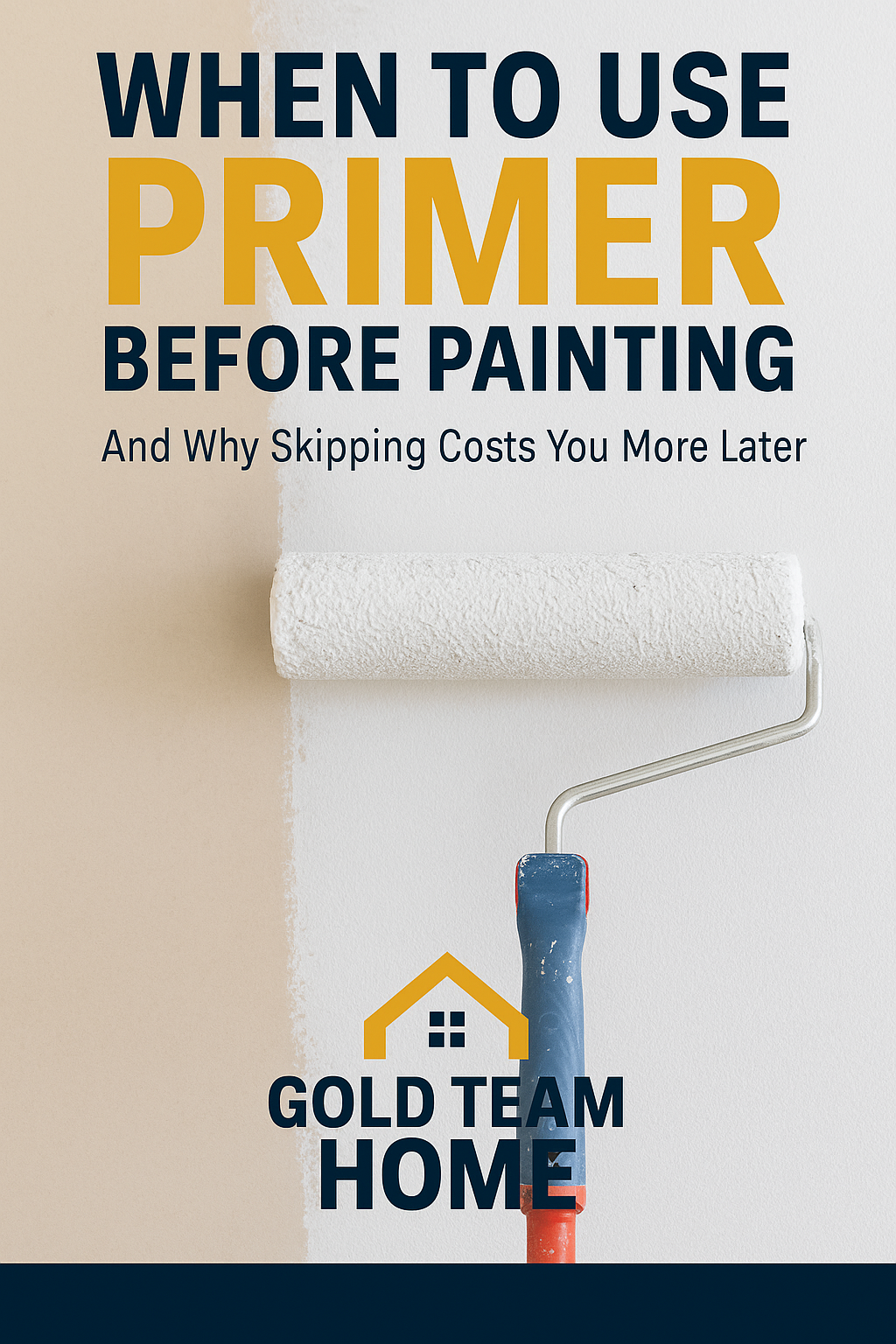Do You Really Need Primer? When to Use It (And Why Skipping Costs You More Later)
Skipping Primer Is One of the Most Expensive DIY Mistakes
You’ve picked your color, grabbed the roller, and you’re ready to paint. But there’s one step many DIYers are tempted to skip: primer.
Primer isn’t just “extra paint.” It seals, smooths, and creates a proper surface so your topcoat looks better and lasts longer. Skip it in the wrong situation, and you’ll waste time and money repainting when stains bleed through, cracks reappear, or your bold color needs six coats to cover.
In this guide, we’ll break down exactly when you need primer, what type to use, and which products are worth buying, so your paint job actually lasts.
Affiliate Disclosure: Some of the links below are affiliate links. If you make a purchase using these links, Gold Team Home may earn a commission at no extra cost to you. Thank you for supporting our site and allowing us to keep publishing helpful DIY content.
When Primer Is Non-Negotiable
1. Covering Stains or Odors
Water stains, smoke damage, grease spots, or marker scribbles will bleed right through regular paint.
- Use: A stain-blocking primer like Zinsser B-I-N Shellac Primer.
- Pro Tip: For nicotine or smoke odors, a shellac-based primer is your best bet. It locks in smells completely.
2. Transitioning From Dark to Light Colors
Painting over navy blue with a soft beige? Without primer, you’ll need four or five coats of paint.
- Use: Zinsser Bulls Eye 1-2-3 Primer or a tinted primer that’s close to your new color.
- Beginner Friendly: Tinted primer is the secret to covering bold walls with fewer coats.
3. New Drywall or Fresh Patches
Joint compound and drywall patches soak up paint unevenly, leaving flashing marks.
Related: Fixing Drywall Mistakes: Holes, Anchors, and Cracks That Keep Coming Back
4. Raw Wood or Bare Surfaces
Paint alone will raise the wood grain and look blotchy.
5. Glossy or Slick Surfaces
Paint won’t stick to glossy walls, tile, or laminate without a bonding layer.
- Use: INSL-X Stix Bonding Primer.
- Pro Tip: A light sanding + bonding primer gives you a paintable surface on even the slickest finishes.
When You Can Skip Primer
- Same-color repaints where the walls are in good condition.
- Ceilings that already have flat white paint and no stains.
- Small projects where self-priming paint is sufficient.
If you’re not sure, add primer. It’s cheaper than repainting a whole room.
Recommended Primers for DIYers
General Purpose
Stain Blocking & Odors
Bonding & Special Surfaces
Want to plan your painting project the right way? Use the Gold Team Home DIY Project Planner to organize paint colors, primer needs, and supplies before you start.
Pro Tips for Using Primer
- Cut in edges with a brush before rolling for consistent coverage.
- Don’t overload the roller. Thin coats bond better and dry faster.
- Sand lightly between coats on wood for an ultra-smooth finish.
- Use tinted primer if switching from dark to light or going bold with red or navy.
Key Takeaways
- Primer is essential on stained, patched, glossy, or bare surfaces, and when going from dark to light colors.
- Skipping primer can lead to flashing, bleed-through, and wasted paint.
- Choose the right primer for the job: water-based for general use, shellac for stains, bonding for slick surfaces.
- Use tinted primer to cut down on coats when changing wall colors.
- Plan ahead with the DIY Project Planner so you have the right primer and tools ready before you start painting.
